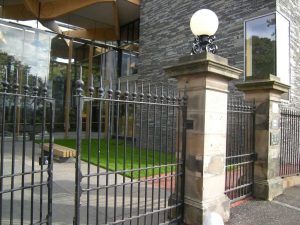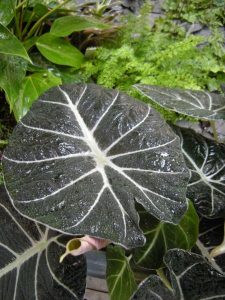Opening on Wednesday 7th October the Gateway building will be the first stunning impression many visitors will have of the Garden. Caithness slate dominates and the glass foyer with its majestic tree ferns will draw you in to the exhibition space. Discover what we do in horticulture, science and education through the interactive exhibits.
The entrance resembles a gigantic vivarium, an enclosed environment in which plants are cultivated from countries and climates far removed from ours. Appreciate the height to which the tree fern trunks rise and then spread their fronds to provide shade for the ground flora.
Within the hall is a more modest free standing glass vivarium. A collection of Tillandsia species are set on the water washed trunk within. These members of the Bromeliaceae family, more at home in Tropical America, are establishing well in the case. Vivariums are similar to the wardian case developed by Dr. Nathaniel Ward in the 1820’s. He noticed the potential for protected plant growth in closed glass structures. Primarily functional; the wardian case contrasts with a vivarium’s decorative purpose. Wardian cases were then used by many plant collectors providing a protected environment for living plants on the long sea journey back to Britain from foreign lands. During Victorian times many ornate cases were constructed; a reconstructed example of which can be seen in the Plants and People Glasshouse.
The dark leaves and spectacularly defined veins of Alocasia reginula show a completely different form of the plant kingdom. A member of a predominately tropical plant family, Araceae, the simple foliage contrasts with the deeply divided green of Asplenium and Selaginella spp. Many of the other plants growing in the vivarium require no soil in which to root, surviving in the moist humid environment of this closed glass cabinet.


